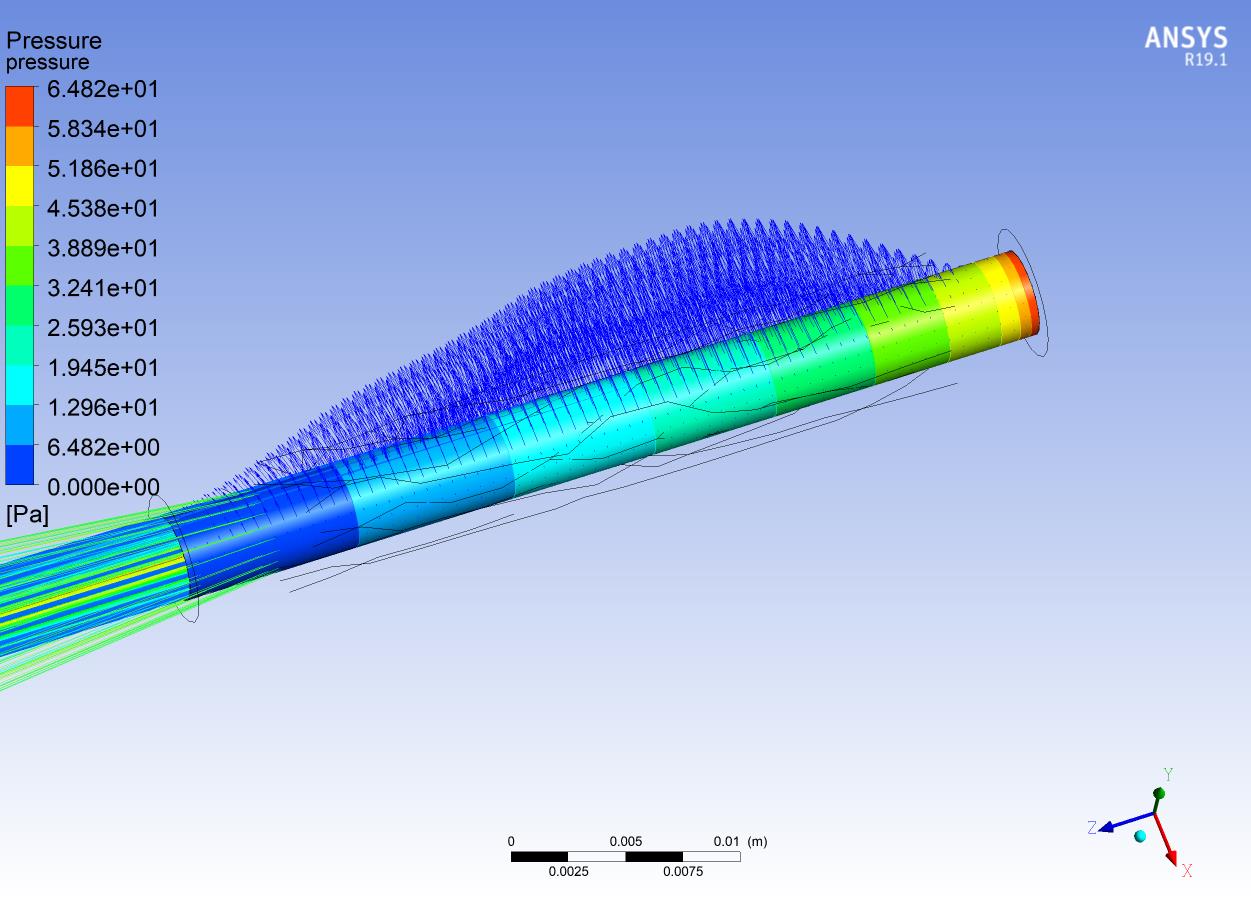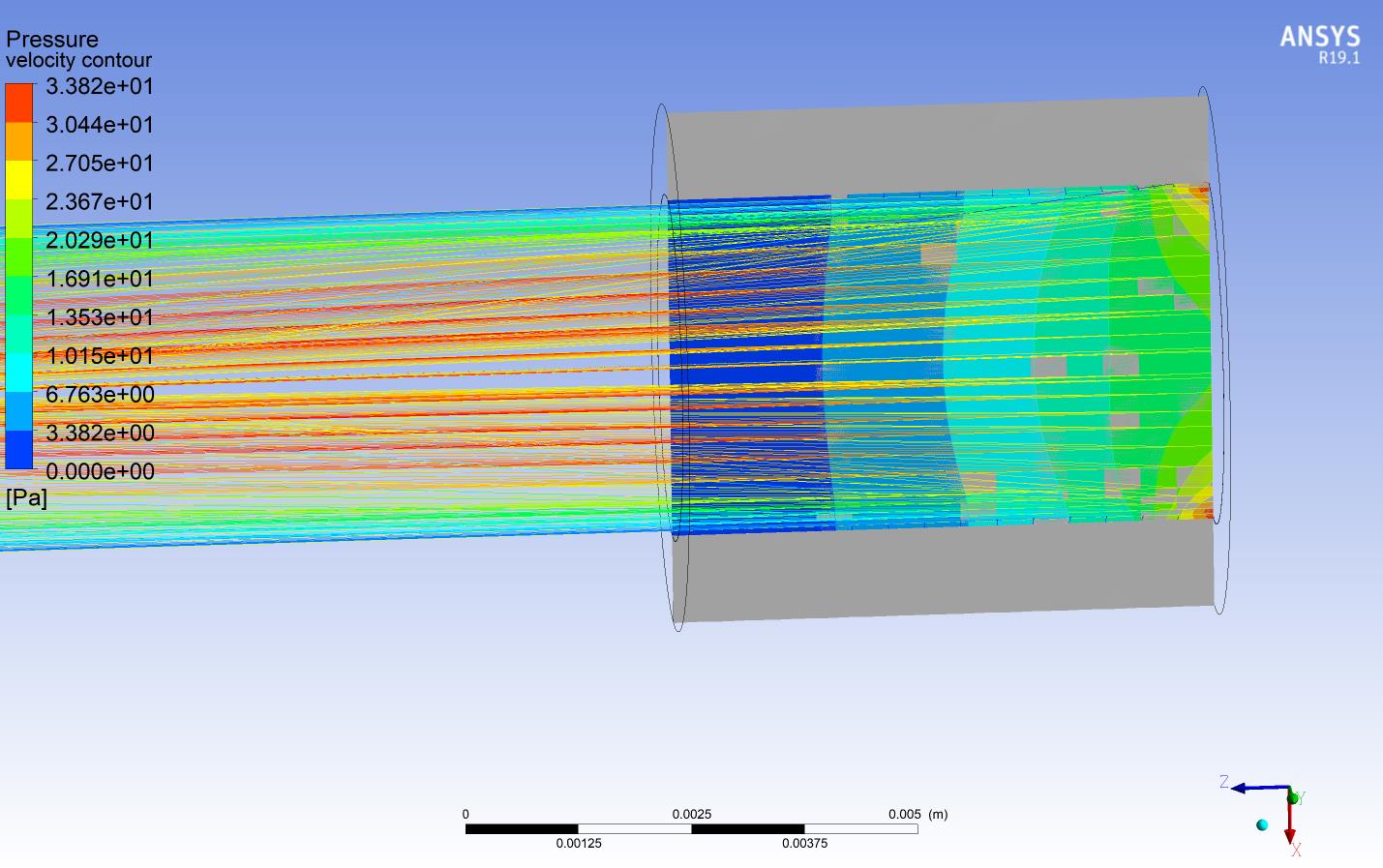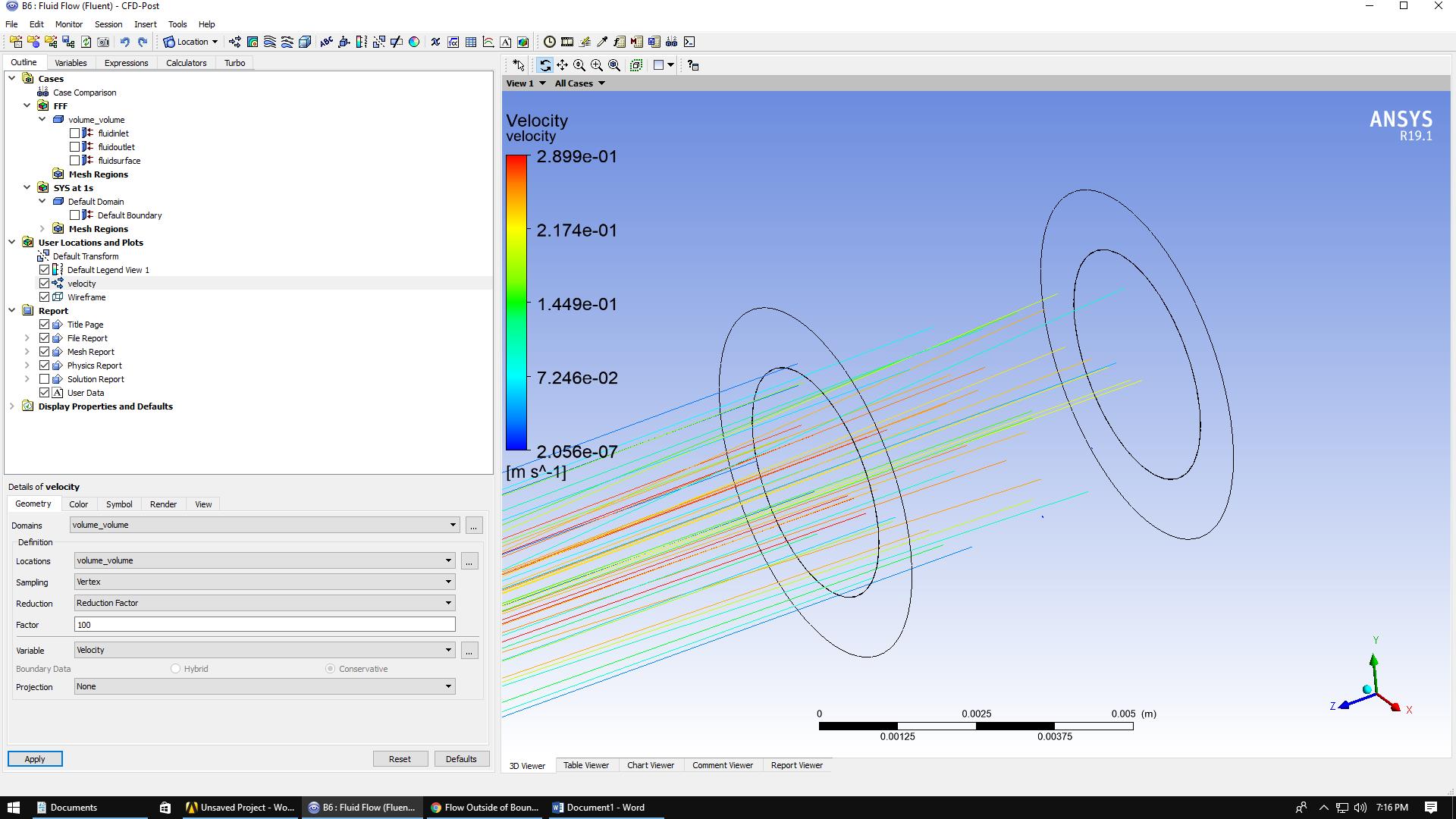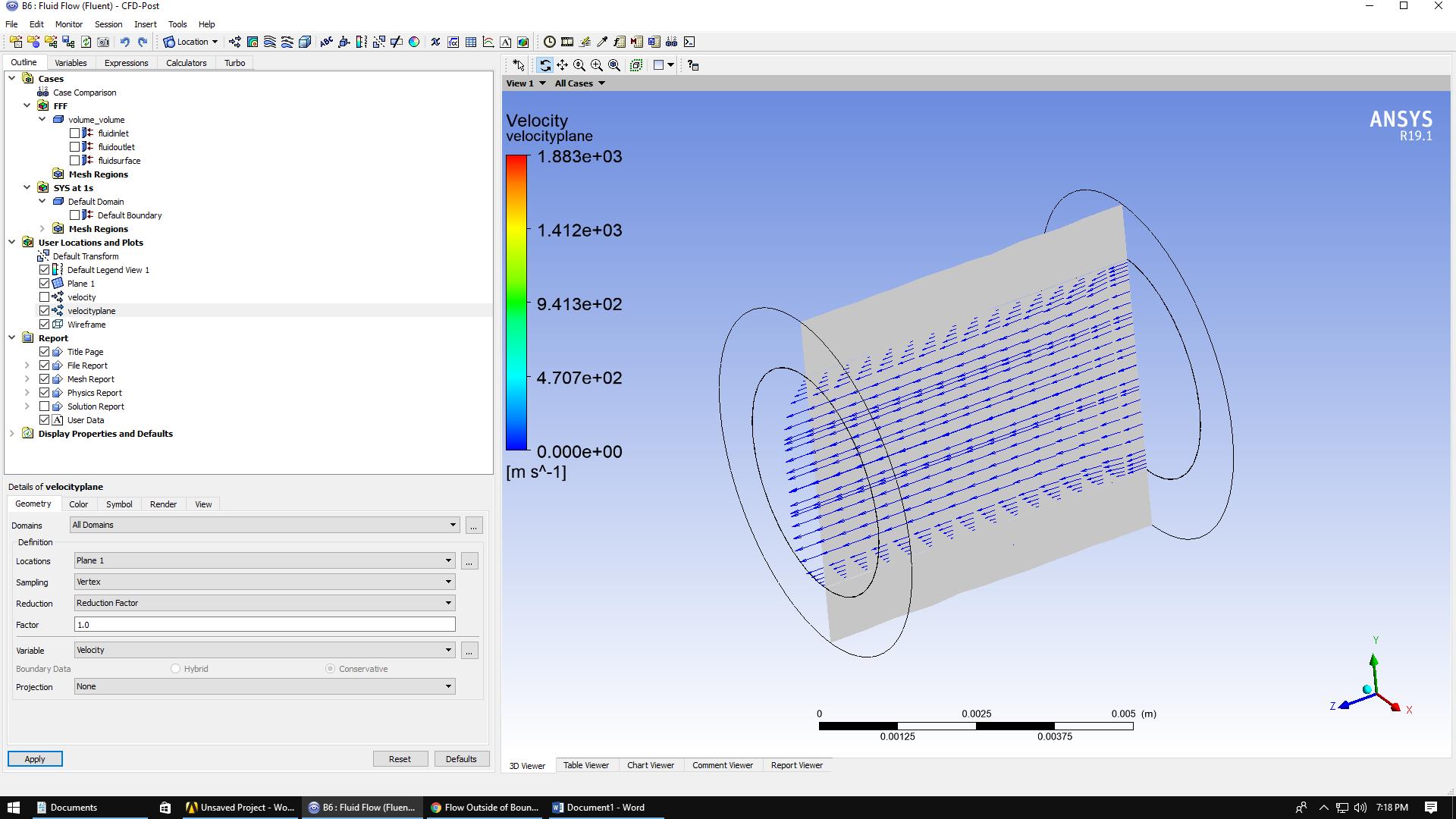-
-
July 10, 2019 at 7:46 pm
thinkinghurts
Subscriber
I am having some trouble simulating transient flow through a cylindrical tube. The structure is modeled as a hyperelastic material and the fluid is newtonian. I am using a sinusoidal inlet velocity and placing a gauge pressure of 0 Pa at the outlet. The simulations run successfully, but the results are inappropriate. When I evaluate the velocity vector of the fluid domain, the vectors shoot out from the outlet like an enormous jet (see attached pictures). The fluid volume was extracted in Spaceclaim and appears to fill the tube perfectly; I don't understand why the flow is not properly constrained within the volume.
-
July 11, 2019 at 10:58 am
Rob
Forum ModeratorVelocity vectors scale based on the speed: they're often bigger than the cells to will "stick out" from the domain. As staff I am not permitted to open attachments, so I'm guessing, please add the images into the text.
-
July 11, 2019 at 6:14 pm
thinkinghurts
SubscriberI think this goes way beyond that. I've put the images in the text. Let me know what you think.
-
July 12, 2019 at 10:13 am
Rob
Forum ModeratorCan you plot velocity contours on a plane down the model and then put vectors onto that surface? Surface of constant x or y should do it.
-
July 12, 2019 at 10:30 pm
Raef.Kobeissi
SubscriberThe plot you showed is not very clear, can you also please describe the setup of your problem.
Thanks -
July 12, 2019 at 10:50 pm
thinkinghurts
Subscriber
Here is a contour plot of the velocity on a midline plane with the velocity vectors plotted over it.
The cylindrical tube in the original post was 40mm, this one is 6mm. The diameter is 3.85mm and the wall thickness is 1mm. I am attempting to simulate blood flow through a vessel. The blood is being considered as a newtonian fluid and the material of the vessel was taken from a uniaxial test and approximated with a 5-parameter Mooney-Rivlin fit. Hope that helps.
-
July 13, 2019 at 12:17 am
Raef.Kobeissi
SubscriberWhat’s the scale of these vectors? Also how come your domain is so short? -
July 14, 2019 at 5:13 pm
thinkinghurts
SubscriberI'm not sure what the scale of the vectors are, but the sinusoidal inlet velocity has an amplitude of 26.8 cm/s and a frequency of 80 s^-1. The 6 mm vessel was chosen to mimic a tissue-engineered blood vessel that was made in my lab - so far, we cannot create them much longer than that.
-
July 15, 2019 at 10:36 am
Rob
Forum ModeratorCan you post the vector settings panel? Also check the vector scale and reduce it by a factor of 100 and replot.
I'd also advise looking into recommended domain sizes: Raef makes an excellent point as the model looks very short compared to the diameter.
-
July 15, 2019 at 11:45 pm
thinkinghurts
Subscriber
Sorry if it's difficult to see. That is a screenshot of the default setting which I have been using. The reduction factor is 1.0.
This is what happened when I set the reduction factor to 100.
Then I created a plane and plotted the velocity again with default settings. The reduction factor is 1.0. Clearly, this is much better - laminar flow is apparent and the vectors are now only slightly protruding from the outlet. However, the magnitude of the vectors appear to be very small and when I performed the animation it was blank at all time-steps except for the last one.
I haven't looked into the recommended domain sizes yet, but I will. Thank you both for your help.
-
July 17, 2019 at 3:57 pm
Rob
Forum ModeratorThat looks correct, it's the vector scale that's giving you the issue: the result is more reasonable in the last image. What you do need to figure out is why the maximum speed is 1800m/s! Check what you're using for the value range.
-
- The topic ‘Flow Outside of Boundaries’ is closed to new replies.



-
3024
-
971
-
857
-
831
-
777

© 2025 Copyright ANSYS, Inc. All rights reserved.














